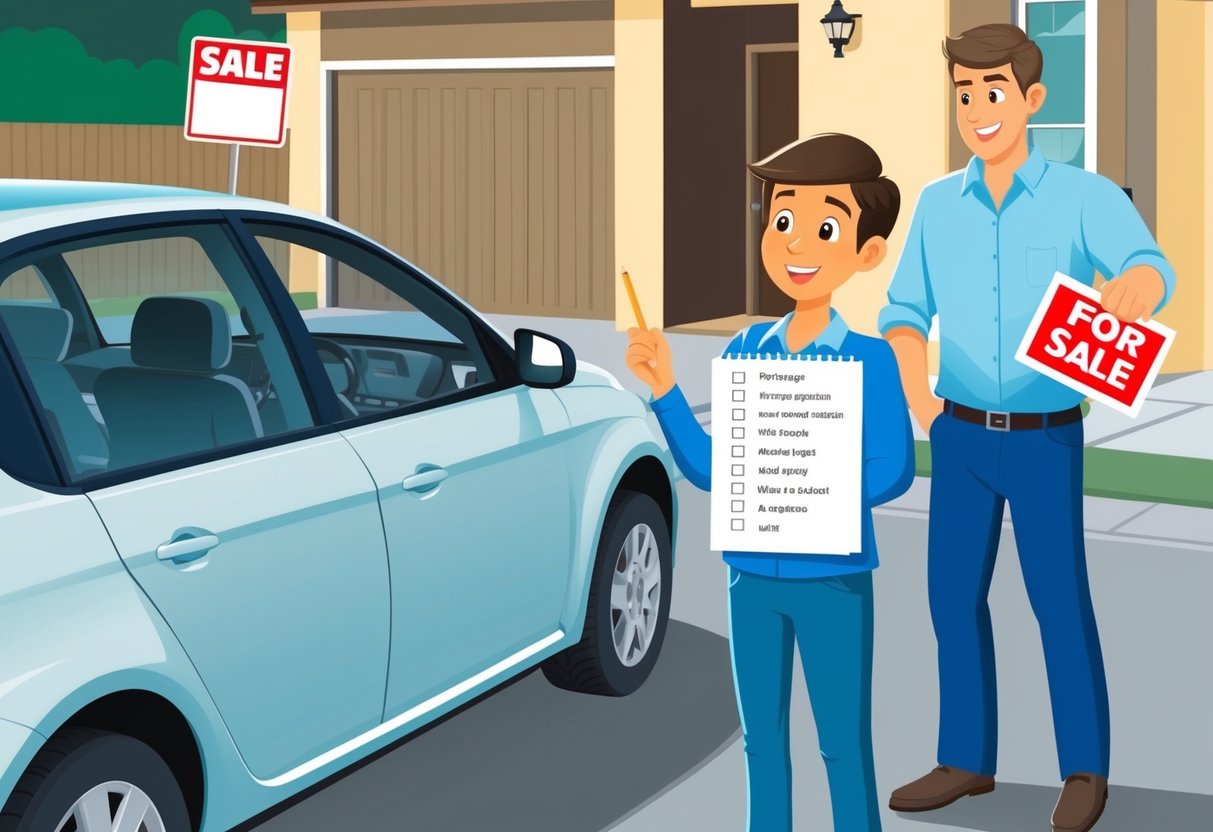
Arranging a Pre-Purchase Inspection

A thorough pre-purchase inspection can help buyers avoid hidden problems. Choosing the right mechanic and confirming what needs to be checked will reduce the risk of unexpected repairs or unsafe conditions.
Finding a Trustworthy Mechanic
Securing a qualified mechanic is essential for a reliable vehicle assessment. Buyers should look for automotive shops or mobile inspectors with strong reputations, verified credentials, and expertise with the car’s make and model.
Independent mechanics are often preferred for unbiased evaluations. Consulting reviews or getting recommendations from friends and family helps identify professionals known for honest and thorough work.
Local dealerships and national inspection services can also offer reputable options. Before arranging the inspection, confirm costs and availability.
It’s standard practice to ask the seller to allow an external inspection—most legitimate sellers will agree, and reluctance may be a red flag. For tips on setting up an inspection with a private seller, see advice from Autotrader on pre-purchase inspections.
Discussing the Inspection Checklist
A detailed inspection checklist highlights areas where issues are most common. Buyers should ask the mechanic to review:
- Engine health: Look for leaks, abnormal noises, and signs of poor maintenance.
- Transmission operation: Ensure smooth shifting with no delays or odd sounds.
- Brakes and suspension: Check for wear, noise, and proper response.
- Electrical systems: Test lights, sensors, and electronic components.
- Interior features: Confirm air conditioning, heating, seats, and infotainment work as intended.
Request that any signs of rust, frame damage, or prior collision repairs be noted. Comparing odometer mileage to the car’s condition can uncover discrepancies.
Discuss review of the vehicle history report where possible. For an expanded guide, see the used car inspection tips from Consumer Reports.
Determining Fair Market Value

Knowing how to determine the fair market value of a used car is key to making a smart purchase. Reliable pricing tools, current market listings, and certified pre-owned alternatives help buyers avoid overpaying and identify genuine deals.
Researching Pricing Guides
Buyers can quickly estimate a used car’s value using online pricing guides from respected sources. Kelley Blue Book and Edmunds are two of the most trusted resources for determining what people are actually paying for similar vehicles.
Both sites allow shoppers to enter specific details such as the car’s year, make, model, options, mileage, and condition. Results from these guides can include private party value, trade-in value, and dealer retail price.
These different figures help a buyer understand what to expect in various transaction settings. Edmunds’ appraisal tool offers a True Market Value that reflects real-world sales data.
Keep in mind that pricing can change depending on location, and optional equipment packages may affect the value more than expected. Jotting down values from several guides and comparing them can give the buyer a reliable price window.
Comparing Similar Listings
Reviewing online listings for comparable cars helps pinpoint a fair price. Searching for the same year, model, trim, and mileage on car marketplaces like CarMax, AutoTrader, and large dealership websites helps identify the range sellers are asking for similar units.
This process also reveals if a private seller is pricing their vehicle above or below the current market. Looking at both private party and dealer listings gives buyers insight into pricing flexibility and negotiation potential.
Note unique features or major differences, such as recent repairs or added warranties, since these can affect asking price. Checking listings in the local area is especially important, since market demand can vary by region.
Taking notes or making a simple comparison table can help keep track of trends:
| Model Year | Mileage | Condition | Asking Price | Location |
|---|---|---|---|---|
| 2019 | 45,000 | Good | $16,500 | Dallas, TX |
| 2020 | 38,000 | Very Good | $17,200 | Austin, TX |
Identifying Certified Pre-Owned Alternatives
Certified pre-owned (CPO) vehicles provide an alternative for buyers who want extra reassurance. These cars, sold through authorized dealerships, must meet manufacturer standards for age, mileage, and condition.
They are typically inspected, reconditioned, and offer additional warranty coverage. Websites like Edmunds or Consumer Reports allow users to compare CPO inventory, which is particularly helpful for seeing how CPO pricing compares to standard used models.
For buyers who value peace of mind, CPO vehicles often offer a balance between cost and reliability. Although CPO vehicles usually cost more up front than regular used cars from private sellers, buyers get benefits like multi-point inspections, manufacturer-backed warranties, and better loan options.
Checking the CPO pricing against listings from private sellers helps confirm whether the additional expense is justified.